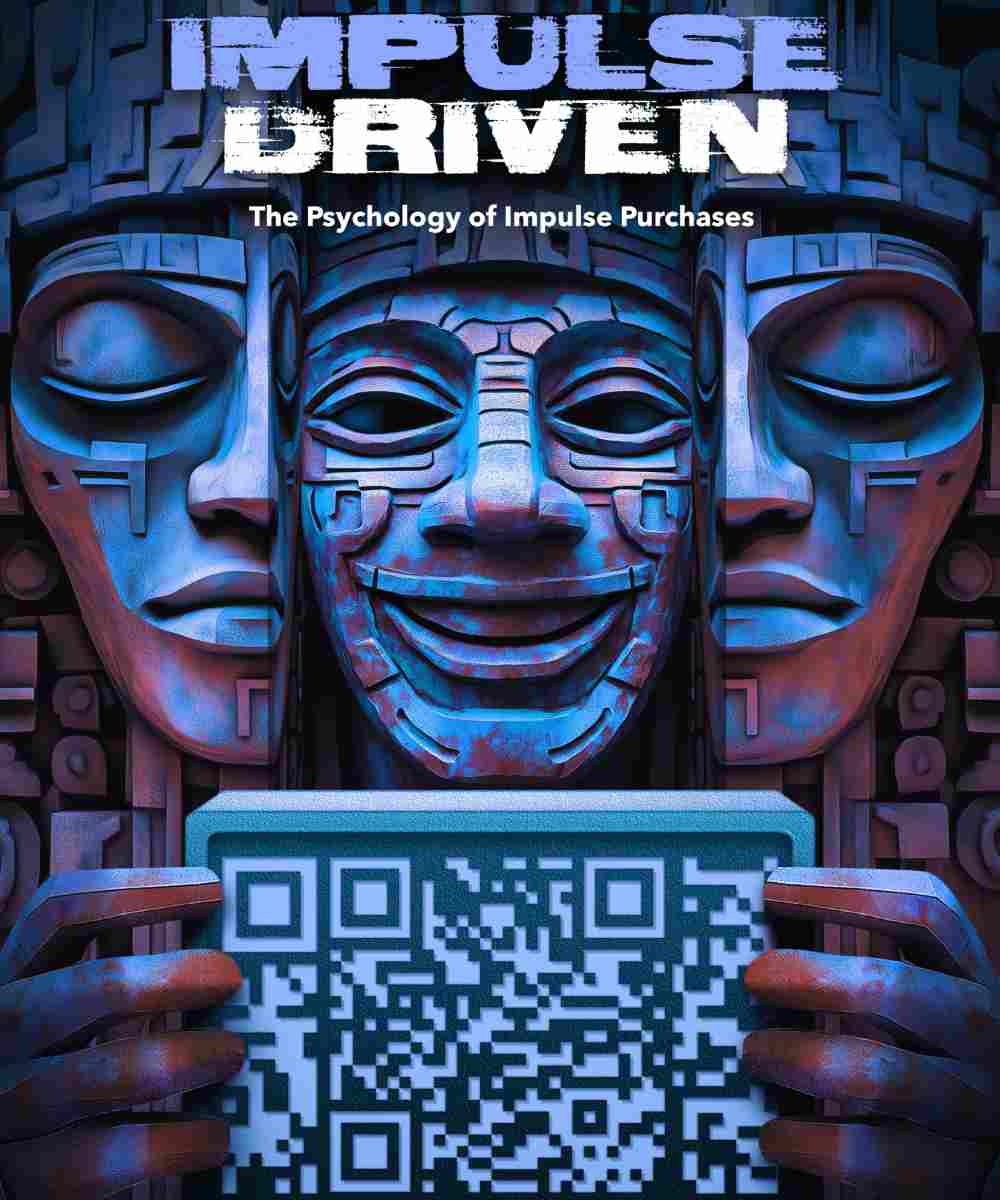The Science of Splurge – What makes us toss that extra bar of chocolate into our cart or suddenly crave a bottle of juice? Tyron unpacks the psychology behind impulse purchases, exploring strategic product placements, sensory triggers, and the subtle art of influencing consumer behaviour.
The other day, while enduring the horrendous ordeal of shopping at a chain retail store with my wife. I noticed something interesting as I waited for her to buy vegetables. This process can easily take half an hour, and I was stuck with the rest of the groceries.
This time, however, despite my protests, she insisted that I wait for her in front of the butcher section, just next to the vegetable section. Standing there, observing the saving grace of any grocery store trip — the little kids and their antics — I noticed that right in the middle of the meat section, this brand of recipe mix had placed a stand with different boxes of their masalas.
I hypothesised that this was one of those brilliant ideas that would probably not work out. Why you might be wondering, as the section and the product were relevant to the location and the consumer.
I assumed that people would not notice the stand because of the rush and crowd in that area. I examined the people around me and watched if anyone would take notice of the stand and the recipe mixes.
Did they? Most of them did not. Even when a house help was dispatched post-haste from the meat section to go buy masalas. I told him they were right in front of him. His mistress refused the masalas in the stand and ordered him to go and get them from somewhere else.
The display I stared at in my utter boredom is an example of a brand team trying to trigger an impulse to purchase. When we talk about IMTs, LMTs and positions where shelf space is premium.
Converting eyeballs into sales or even trials is important. It can have two benefits. One is that you obviously increase sales, and the second is that the store demands your product more. So, what are some ways a clever marketing team can effectively induce a purchase?
First off, of course, companies, especially those selling confectionery and candy, strategically place their products near the counter. Stores often position items like chewing gum at the check-out to encourage impulse purchases.
However, in supermarkets like Imtiaz and Carrefour, I have not seen this placement at counters, but I have seen the special offers section. Especially batteries being placed on the path towards the cash register.
As I discovered when conducting a retail survey in 2002 for JWT. Space is holy and sacred, and in kiryana stores or khokas, your fancy, creative brand placement ideas can come undone at the seams more easily than not.
One of the most highly visible things is shelf talkers and buntings. These are very noticeable and, in theory, should be quite impactful. But in Pakistan, stores do not care about positioning products on shelves where marketing material is present.
The effect can be diluted. Does the amount of effort and time that goes into creating these marketing aids translate into greater brand value and preference? I have my doubts. But these items are part of the brand communication and are deemed essential.
What other tools are available in the arsenal of a brand team? Another area that seems a no-brainer is packaging. It’s a critical factor that I firmly believe is undervalued in Pakistan.
Malcolm Gladwell, in his book ‘Blink’, explains how, in the USA and probably most of the developed countries.
Brands use packaging as an exact science to convey emotions, brand values, and influence decision-making, all at a fraction of the cost of marketing or advertising campaigns. In Pakistan, we are, if not agnostic to this practice, we are novices at it. To truly decipher the effect of your packaging. A brand needs to go beyond aesthetics, it needs to embrace psychology and neuromarketing.
So yes, even though I was a sceptic of subliminal marketing as a force, it does exist, but not in the sinister way we feared or even hoped. But in a simpler yet still exceptionally powerful way that influences our minds and decisions.
The principle at work, as Gladwell explained, is sensory transference. The appearance of the container influences the experience of what it contains, or rather, the perception of the container influences the perception or experience of the product.
If you give someone a premium product, but the packaging or container is cheap and shoddy. The person will probably end up with post-purchase cognitive dissonance. They will feel extremely dissatisfied with what they have bought and consumed. It’s not rocket science, but it is science.
Another factor that can influence whether customers pick up your product or brand is whether they see it. Yes, this links back to packaging. If your brand, like Mitchell’s, uses a red and white bottle while the competition opts for red and green, you automatically stand out on the shelf and increase your chances of being purchased.
However, a brand needs to be visible to be in the consideration set while the consumer is purchasing. The Urdu adage, “jo dikhte wohi bikthe hai,” – what is seen, sells, is extremely apt and accurate in this scenario.
Research proves that the area where people can spot products from their knees to their eye level is known as the strike zone, based on the baseball strike zone. Above and below this area, the probability of purchase decreases drastically.
In order to be in that zone, brands need to offer cash and other incentives to the merchants. Which would be decided according to the sales level of that merchant compared to the total sales in the area for the brand.
Another way that brands try to get people to prefer their brand is through the use of brand representatives. I’ve seen them at most retail supermarkets, and most of the time. They stand for hours, waiting for a customer to grant them the courtesy of acknowledging their existence.
Also, though these youngsters, usually girls, are paid by a particular brand, at times they are required to help a customer find a competitor.
Similar to the brand representatives, brands also use consumer promotions, gifts and bundle products, which can include complementary products. For example, a tea brand gives a free packet of sugar with its SKU. But this can also negatively impact the brand image and make the brand appear desperate in a way.
The best way to get a consumer or customer to buy your brand is to create an emotion. A strong emotion, ideally in the store, some sort of stimulus that can influence them. Especially at the most important time in the whole marketing cycle. One simple way to do this is to use location-based messages like SMS that target people in the store or in the vicinity.
Another powerful way and untapped in Pakistan to a great extent is to use the other senses other than sight. Researchers explore concepts such as freshness. Which seem simple but are actually complex and highly subjective, much like taste and smell.
Chris Lukehurst, a LinkedIn contact of mine who runs The Marketing Clinic, talks about the senses and other factors. And the emotions they can use to create a memorable consumer experience.
As he writes on his blog: “Freshness is communicated through a range of sensory cues—visuals, packaging, colours, aromas—all working in harmony to create a sense of something being fresh.” As he says, these form in unison the unique emotional journey. To quote the oft-repeated and mistranslated Gestalt statement: The whole is greater than the sum of the parts.
In Pakistan, if marketers are smart enough, they will understand that the future of impulsive purchase lies not surprisingly in deep consumer research to probe their subconscious, to create the right mix of cues that generate synergy in order to consistently deliver the emotional experience they desire, so the consumer is in the palm of your hand while they are in the stores.


